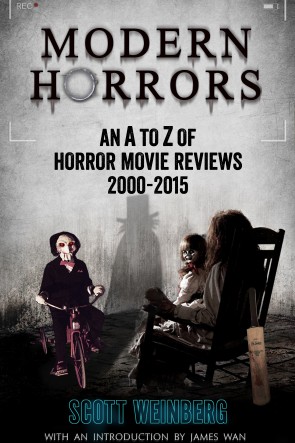Book Review: SCI-FI: DAYS OF FEAR AND WONDER{0}
Sci-Fi: Days of Fear and Wonder, the 162-page companion book to the BFI’s major science fiction retrospective, arguably has a great deal more Wonder than Fear, but there’s plenty for horror fans to get their teeth into, despite the absence of an essay on the sci-fi/horror subgenre that might best have encapsulated the theme of the retrospective.
 The century or so of science fiction cinema, the medium’s most popular genre, gives plenty of scope for the 28 essays of which the book is comprised, but horror fans will be most interested in Kim Newman’s essay “Unearthly Strangers,” which begins with a bold reassessment of the Alien and Predator films – describing the Predators as “the redneck American scum of the universe” and proposing sympathy for the Aliens, “hardy parasitic bugs with an animal urge to survive and propagate” – before examining cinema’s mostly limited capacity to depict aliens which are truly alien. Science fiction author and scholar John Clute documents cinema’s perennial fascination with depictions of catastrophe, and draws intriguing parallels between this and the real-life disasters of the 20th century, reminding us that “the terror and shock of witnessing 9/11 must have been accompanied by a terrible sense of recognition” to anyone who has seen a blockbuster like Independence Day. Roger Luckhurst’s “Dancing with Darwin” examines science fiction cinema’s man-made monsters, drawing a circle from Mary Shelley’s Frankenstein, the basis for James Whale’s 1931 classic, to Ridley Scott’s critically maligned but popular Prometheus, arguing that science fiction remains “chillingly relevant, a crucial register of the late thoughts of Homo sapiens in its potentially forever altered state, just before the reboot.”
The century or so of science fiction cinema, the medium’s most popular genre, gives plenty of scope for the 28 essays of which the book is comprised, but horror fans will be most interested in Kim Newman’s essay “Unearthly Strangers,” which begins with a bold reassessment of the Alien and Predator films – describing the Predators as “the redneck American scum of the universe” and proposing sympathy for the Aliens, “hardy parasitic bugs with an animal urge to survive and propagate” – before examining cinema’s mostly limited capacity to depict aliens which are truly alien. Science fiction author and scholar John Clute documents cinema’s perennial fascination with depictions of catastrophe, and draws intriguing parallels between this and the real-life disasters of the 20th century, reminding us that “the terror and shock of witnessing 9/11 must have been accompanied by a terrible sense of recognition” to anyone who has seen a blockbuster like Independence Day. Roger Luckhurst’s “Dancing with Darwin” examines science fiction cinema’s man-made monsters, drawing a circle from Mary Shelley’s Frankenstein, the basis for James Whale’s 1931 classic, to Ridley Scott’s critically maligned but popular Prometheus, arguing that science fiction remains “chillingly relevant, a crucial register of the late thoughts of Homo sapiens in its potentially forever altered state, just before the reboot.”
Other chapters, of varying interest to the horror enthusiast, include essays on Dystopian futures, sci-fi of the silent era (wittily yet inevtiably titled “Silent Running”), sci-fi cinema as spectacle, films and TV shows with conspiracy themes, time travel, technological imaginings, Cold War sci-fi, space exploration (and how it almost always ends badly), British television sci-fi from Doctor Who to, well, Doctor Who (via Quatermass, Doomwatch and Day of the Triffids), space opera, special effects, virtual reality, and pretty much every other topic related to science fiction on screen. Particularly important is the relationship between science fiction literature and its cinema counterpart, or rather the latter’s reliance on the former; Newman, in particular, reminds us that so many of the quintessential science fiction films had literary progenitors, and what emerges from the book as a whole is that, as much as it tries to tell us about the future, cinema always seems to be one step behind what’s happening in books.
Whether you attend any of the films being screened as part of the BFI’s Sci-Fi: Days of Fear and Wonder retrospective or not, the companion book is a fascinating collection of essays – even if it doesn’t tell dyed-in-the-wool sci-fi fans much they don’t know already.
★★★★








